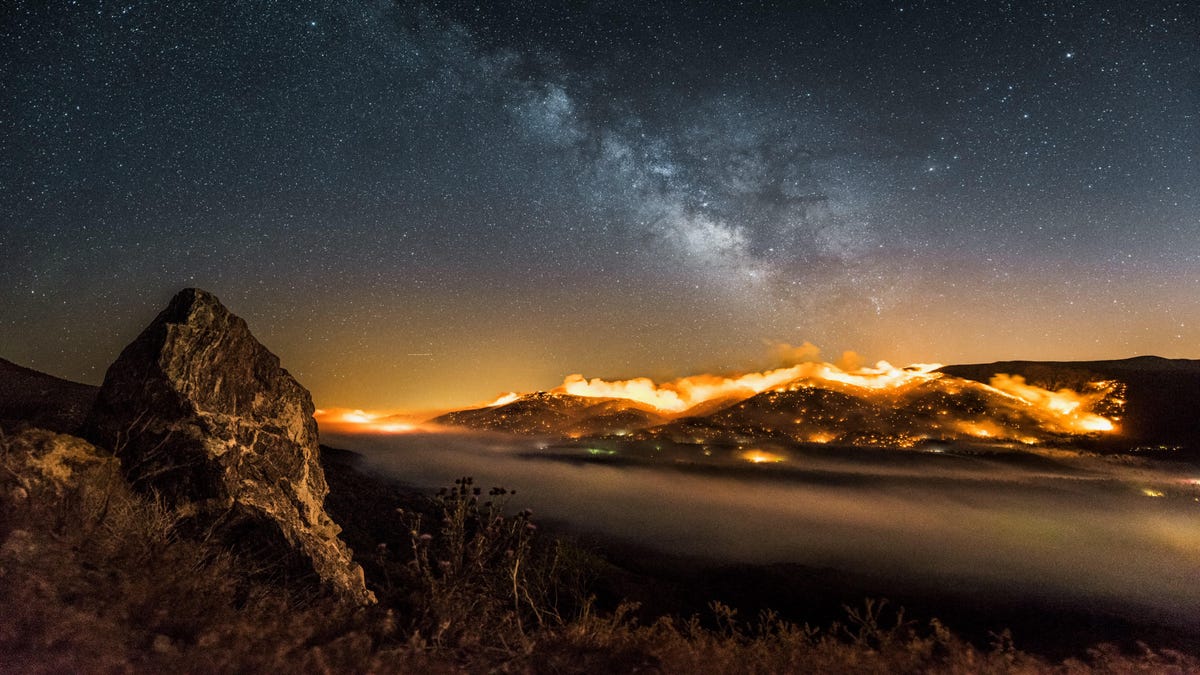Nat Geo's 'One Strange Rock': Astronauts tell Earth's epic tale
Will Smith, Darren Aronofsky and eight astronauts tell the story of Earth in a bold new way in National Geographic's documentary series "One Strange Rock."

You probably don't know much about the tallest structure in South America, because it's not easy to get to. It's the Amazon Tall Tower Observatory rising 1,066 feet (325 meters) straight up out of the world's largest rainforest, far from civilization. Scientists use the remote tower to observe not only the Amazon, but an even larger "flying river" of clouds above that eventually rain upon the Andes to recharge the whole ecosystem, and by extension, Earth's global oxygen supply.
The Amazon Tall Tower Observatory in Brazil.
The tower is one of dozens of hard-to-reach places National Geographic visited with film crews to create its epic new documentary science series "One Strange Rock," premiering Monday, March 26.
The show tells the story of Earth, and life on it, with the help of host Will Smith, eight astronaut co-hosts, the intense visual storytelling style of producer Darren Aronofsky, and incredible locations that range from a raging pool of lava in the Democratic Republic of Congo to the International Space Station, whipping by above us at 17,000 miles per hour (27,500 kilometers per hour).
"I hope that people feel like they've been reintroduced to the planet," one of the astronaut co-hosts, Nicole Stott, told reporters on a conference call. "We go through our daily lives ... without really even thinking about the fact that we're on a planet."
Across the 47 minutes of the first installment of "One Strange Rock," we hear about the time Canadian astronaut and noted space musician Chris Hadfield went blind during a spacewalk before the show takes us to rarely seen sights in Ethiopia, the Arctic, Peru and a ceremony in Thailand, as well as the top of that huge Amazonian tower.
The multicoloured mineral deposits and acidic pools at the Dallol volcano, viewed from a drone.
The show is heavy on dramatic, beautiful visuals from around the world like you might expect from National Geographic, but they're presented in a new way with the jarring editing style and edgy, almost sci-fi-like sound design film buffs will recognize from Aronofsky flicks like "Mother" and "Requiem for a Dream."
The melding of science and visual drama is also reminiscent of high-quality factual productions like the BBC might produce. Nutopia founder Jane Root executive-produced the show, which was overseen by showrunner Arif Nurmohamed. Both Root and Nurmohamed spent time with the BBC.
Former astronaut Mae Jemison hosts two episodes about how life got started and bloomed on Earth against all odds.
"We have to fall in love with this planet, that's how you get people to care about it ... and recognize the Earth is part of this greater universe," she told me via phone when I asked why she chose to work on "One Strange Rock."
Tropical Cyclone Joalane is seen over the Indian Ocean.
The show also examines the possibility of expanding intelligent life on Earth beyond the places we've lived so far, perhaps to other places like the moon or Mars. Hadfield co-hosts a later episode that looks at the challenges of colonizing another planet.
"Seventeen and a half years ago we started settling space (via the International Space Station)," Hadfield told me over the phone. "The next logical step will be permanent habitation on the moon, much like Antarctica over the last hundred years ... setting up a research station on the moon."
If Hadfield is right, we'll all look forward to National Geographic's follow-up series, "One Strange Satellite."
One Strange Rock premieres Monday at 7 p.m. PT/10 p.m. ET on the National Geographic Channel.
First published, March 23, 2:26 p.m. PT.
Update, March 26 at 11:06 a.m. PT: Adds information on Jane Root, executive producer.
Crowd Control: A crowdsourced science fiction novel written by CNET readers.
Solving for XX: The tech industry seeks to overcome outdated ideas about "women in tech."

